The First Few Days of Hell
Flames spread incredibly quickly and bypassed barriers put in their way by fire crews. Glowing embers were carried up to fifteen kilometers. Water bombers and helicopters were eventually grounded due to extreme winds and excessive chop in the nearby lake. All pre-existing man-made checks and balances were thwarted by the elements. In the words of Calgary Fire Services Public Information Officer Brian McAsey: "If our 1400 men and women were lined up on that road, if you told us it was coming, and if we had every apparatus ready to go, we could not have stopped that fire. It was unprecedented. It was unstoppable."
The toll of this catastrophe continues to be calculated. But despite one of the largest displacements of residents in Alberta's history, and despite the tragic loss of homes and businesses, common accounts from those on the ground are immense pride in the people of Lesser Slave River, and sheer amazement that not a single life was lost to the flames.
The First Three Days
Saturday, May 14, 2011
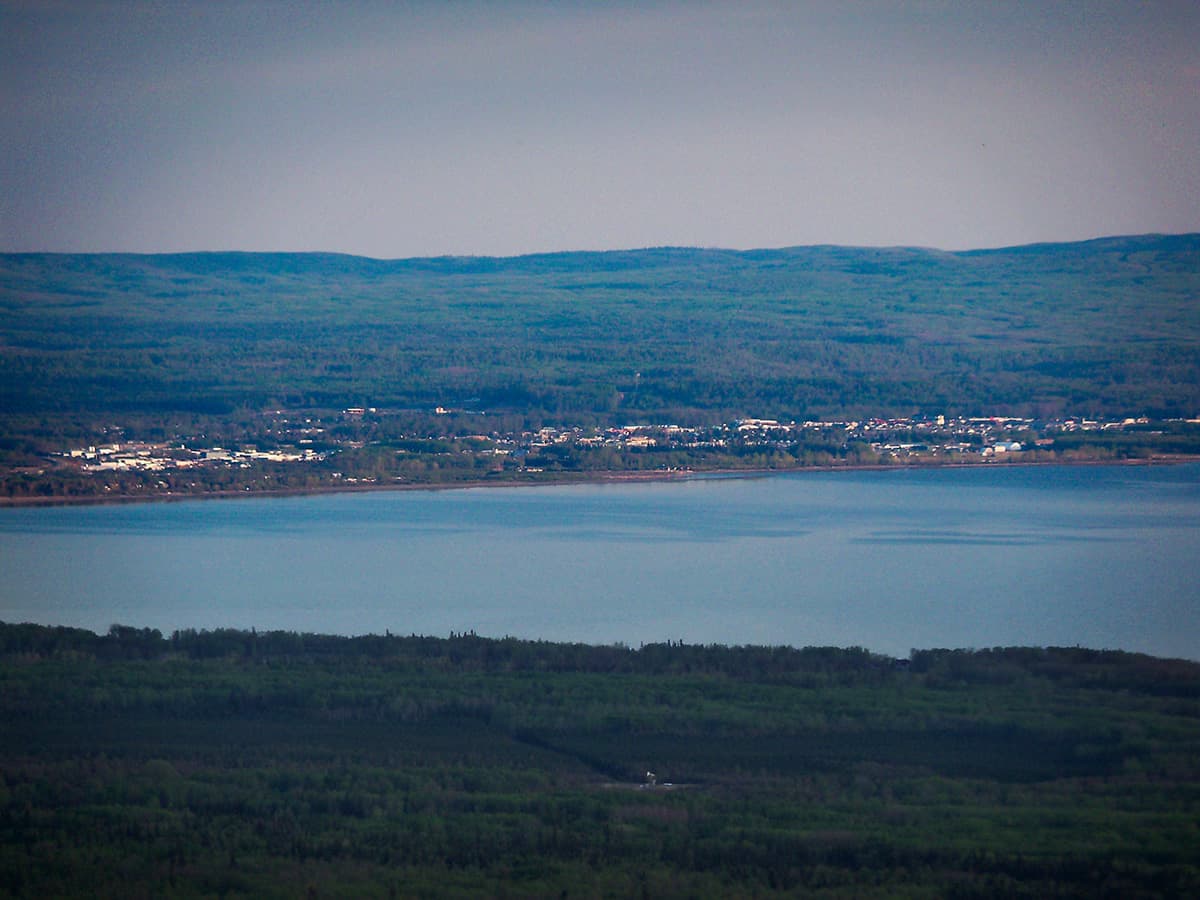
9:00 am
No clouds or rain for days. The region is bone dry. Northwest winds blow steadily at 50 to 70 km/h.
"It was incredibly windy that day. My husband and I were doing yard work when we saw the first water bomber fly over."
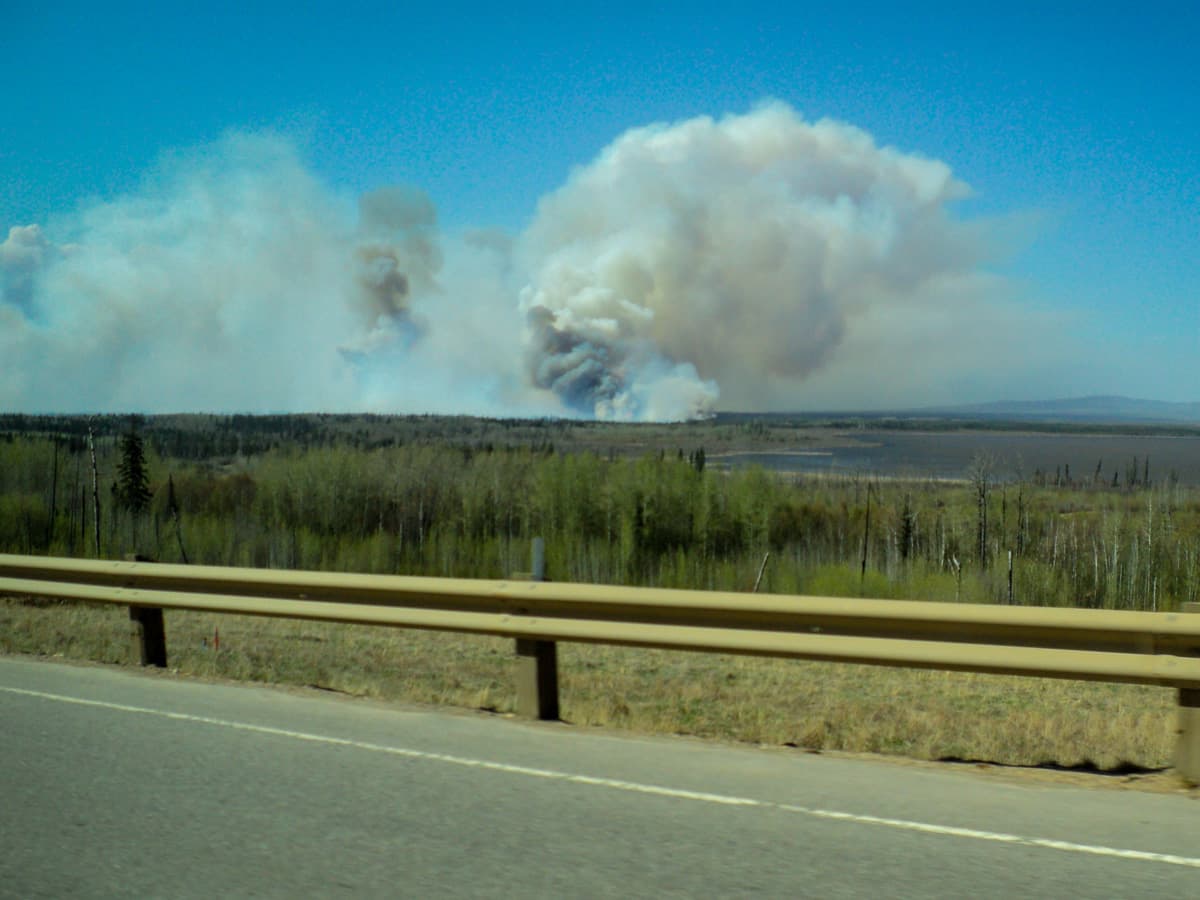
1:00 pm
A fire starts 15 km east of Slave Lake. In less than three hours it will spread from its ignition point to more than 500 hectares.
The first fire is spotted in an old logged-out area by quad riders — and moments later by an Air Attack Officer on a flyover. The blaze is immediately reported to MD administrators. Water bombers, ground crews and heavy equipment are dispatched to the location.

4:30 pm
A second fire is spotted from the air about eight kilometers east of Slave Lake.
Some resources from the first fire are diverted to fight this fire as it approaches the communities of Mitsue and Poplar Lane. It spreads from zero to 500 hectares in less than three hours.
"We saw a large black cloud and we thought 'this is something we've never seen before.' And then we saw fire dropping out of the sky."
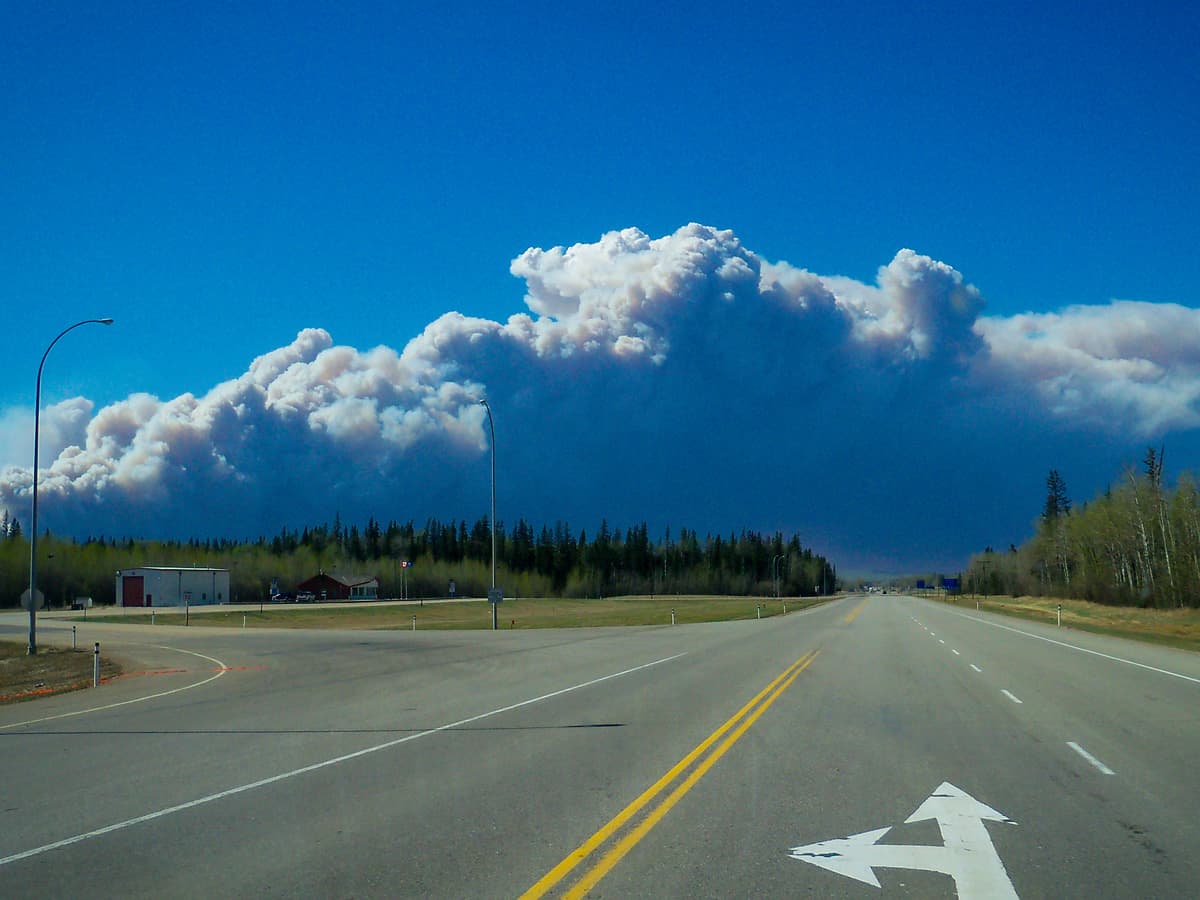
7:15 pm
The MD issues a State of Local Emergency after learning that homes in Mitsue had been destroyed.
Residents in neighbourhoods east of the city, including Mitsue and Poplar Lane, are evacuated, but officials still believe the Town of Slave Lake is not threatened by the fire.
Sustainable Resource Development (SRD) and regional ground crews work throughout the night hitting spot fires, rescuing structures and back burning. SRD air attack eventually times out to resume in the morning.
Sunday, May 15, 2011
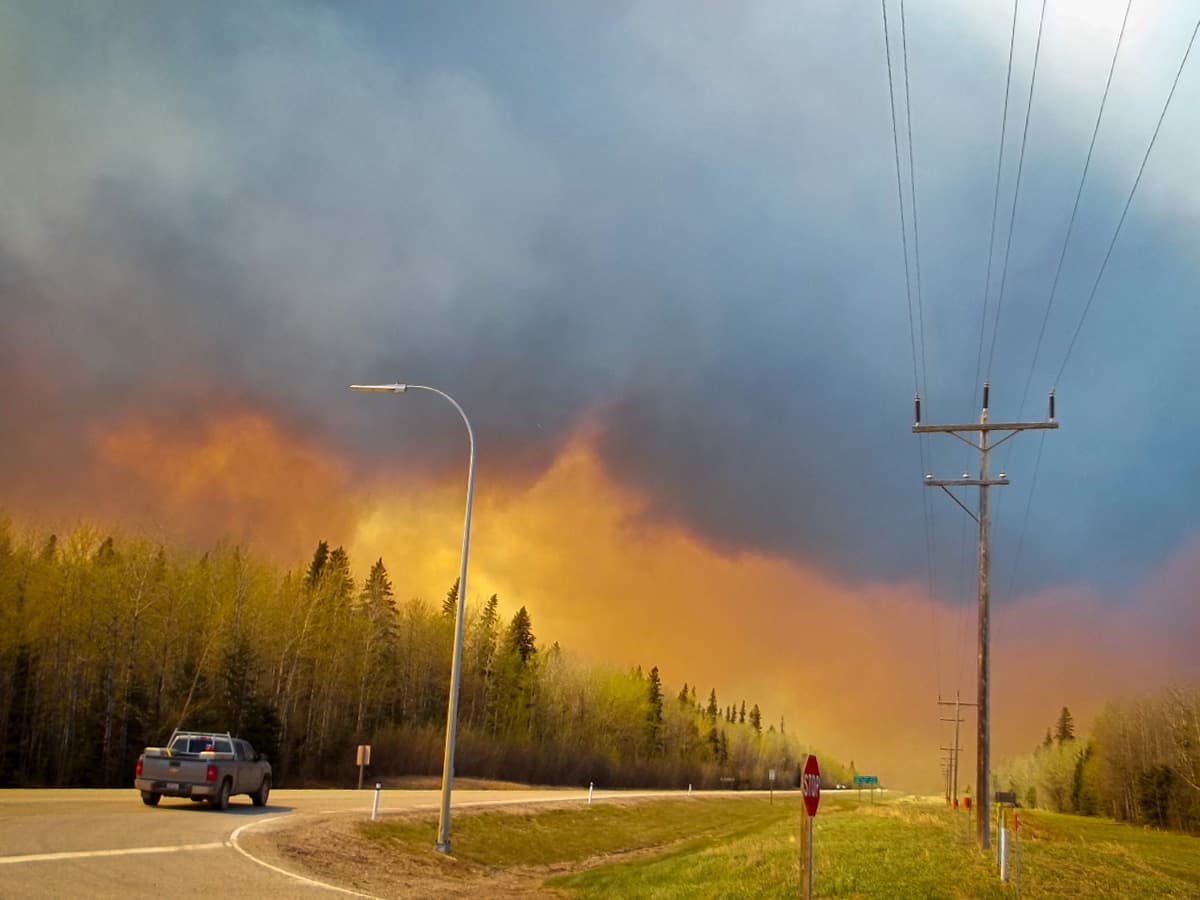
9:00 am
The Government of Alberta declares the fire near Slave Lake a Level II Emergency; an escalation from the Province’s standard Level I status.
With winds upwards of 70 km/h, both fires are now burning out of control. Fire 56 reaches its trigger point and the MD evacuates all communities west of Slave Lake. HWY 2 West closes for safe travel of evacuees, and HWY 2 East closes intermittently due to fire.
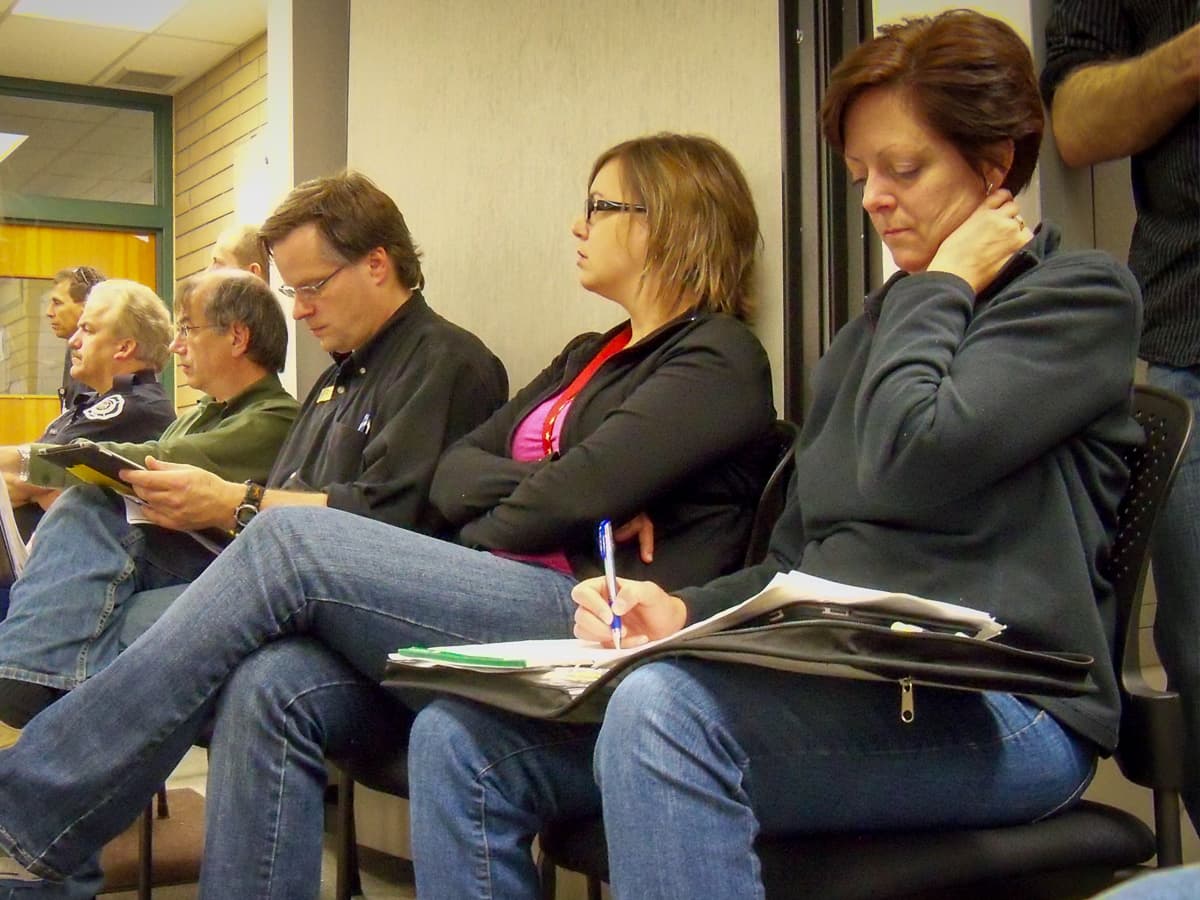
1:00 pm
The blaze is bumped to a Level III Emergency. Government departments are notified and an Emergency Operations Centre is established.
The Government of Alberta releases a statement saying that two wildfires are out of control in the Slave Lake area, and have burned about 2,000 hectares. The MD declares a State of Local Emergency (SOLE) and an evacuation order is issued for communities along the south shore including Canyon Creek. Residents begin evacuating.
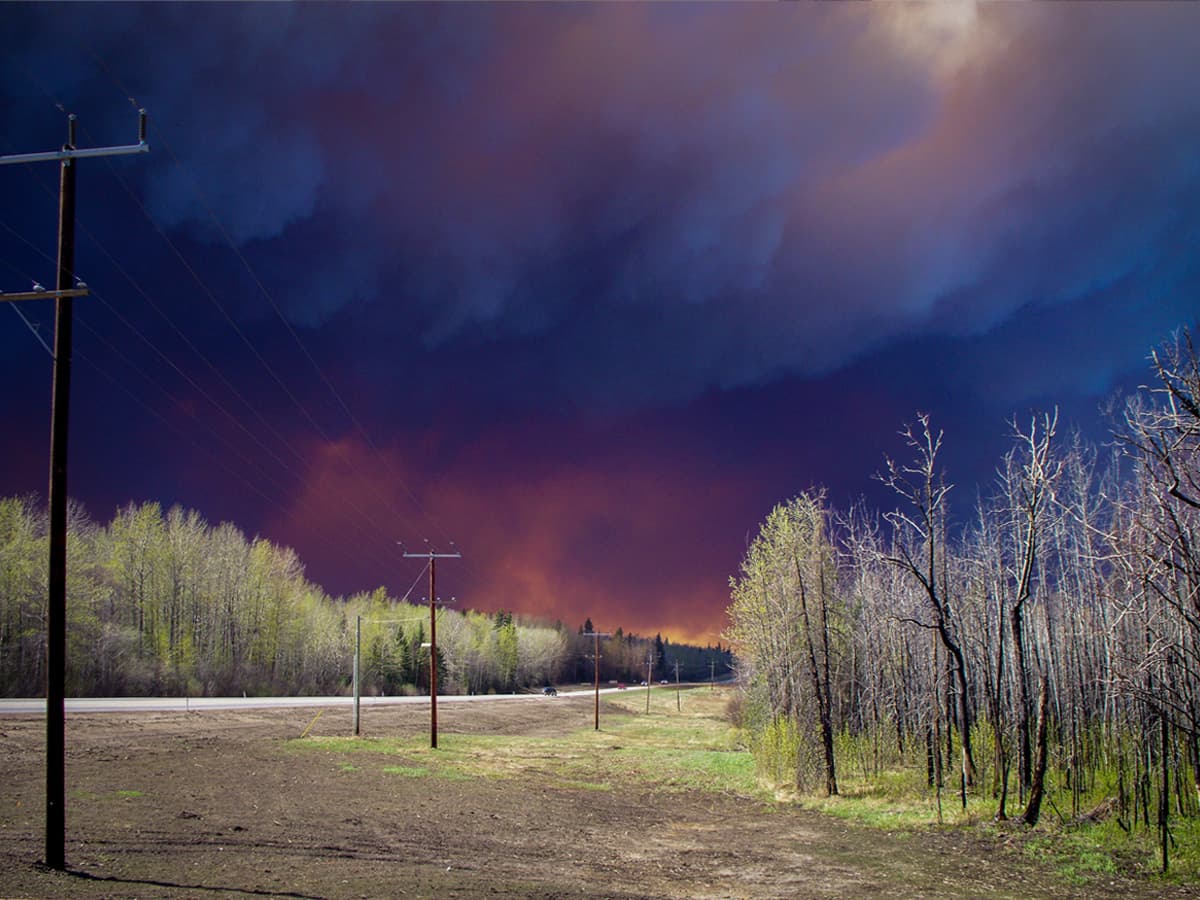
2:30 pm
Winds change course and reach 100 km/h. Fire rages back through Mitsue, destroying more homes and heading for Slave Lake.
MD personnel make the call to abandin the Administration Office. They join Slave Lake incident command at the newly-establoshed EOC. SRD grounds its water bombers due to high winds. HWY 2 West and HWY 88 North are closed to all traffic.
"It was so smoky. It was hard to breathe. It looked like hell."

4:00 pm
A third fire is spotted to the north of Slave Lake, and available SRD resources are dispatched to the scene.
Compared to the other two rapidly spreading fires, this blaze proves relatively easy to contain.
Red Cross emergency volunteer teams begin congregating in Edmonton, preparing to head to Slave Lake with trucks full of cots, blankets and hygiene kits for those who have been evacuated.
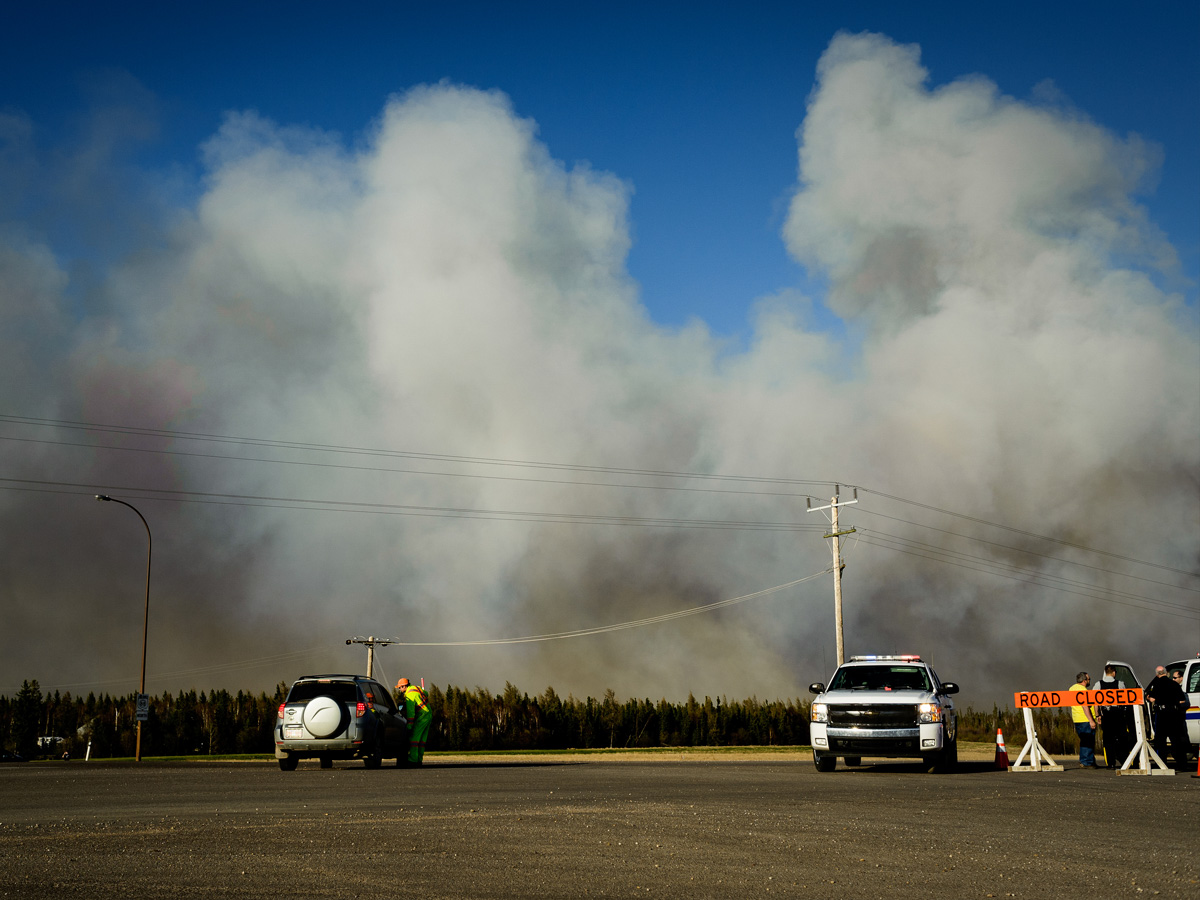
7:00 pm
The fire crosses Highway 88 and is soon expected to cross Highway 2. All routes into or out of the area are completely cut off.
Water and electricity begin to fail. The local radio station goes off the air. SRD, Police, Fish & Wildlife and local fire crews stand their ground.
"These conditions make it incredibly difficult for firefighters to contain fires quickly. The wind compounds the problem we're already experiencing, which is warm, dry temperatures."
— Rob Harris, Alberta Wildfire Information Officer
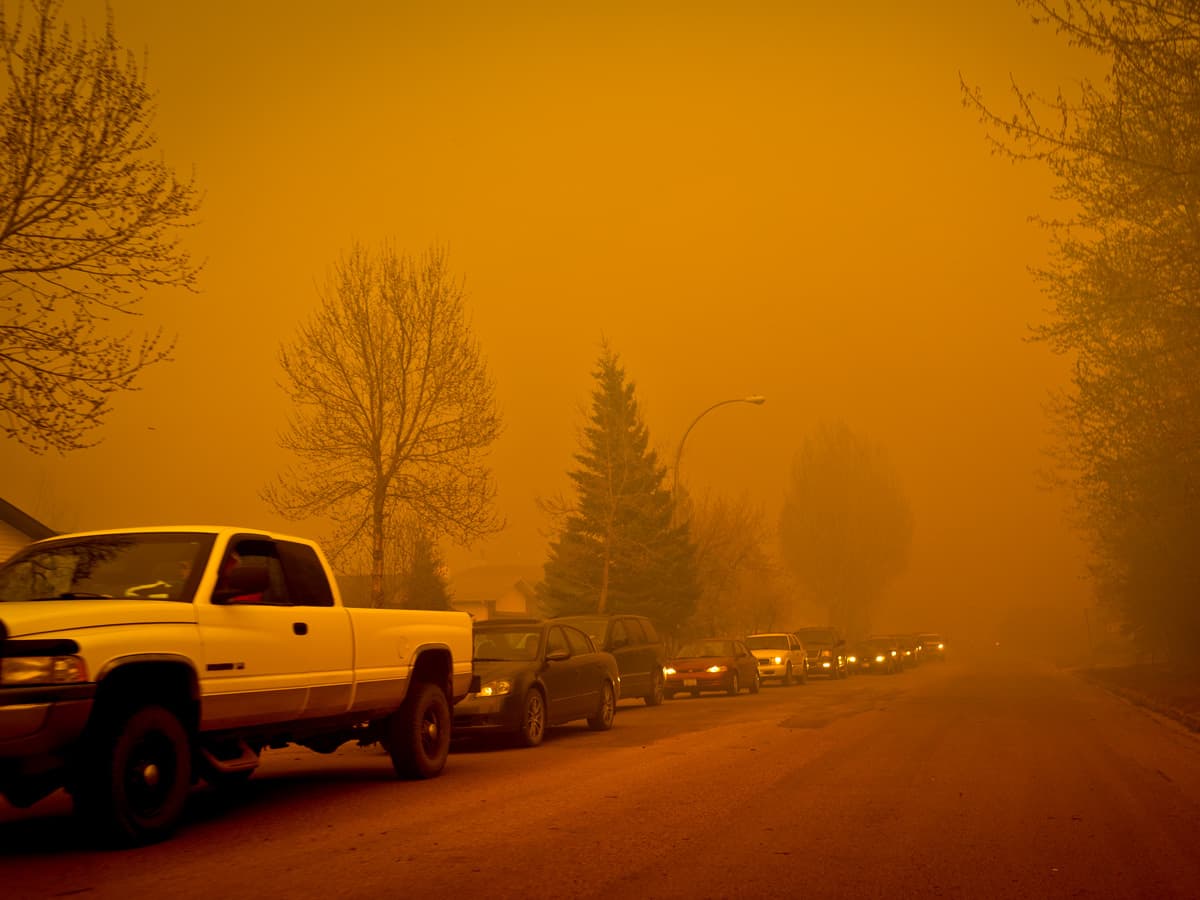
9:00 pm
The situation is escalated to a Level IV Emergency – the highest possible designation.
The Emergency Operations Centre works around the clock. They request help from the Provincial Operations Center. Neighbouring municipalities contribute available resources.
This is the province's first Level IV Emergency since 2005 when there was massive flooding in southern Alberta.
Monday, May 16, 2011

8:00 am
Nearly all residents have been evacuated. Only essential staff and firefighters remain.
SRD and local firefighters are joined by more than 120 emergency personnel from across the province. As they continue to attack the wildfires, only essential Emergency Operations staff, police and firefighters remain in the line of fire.
"I have struck a task force of key governmental ministries and agencies to deal with the immediate needs of the community and develop a transition plan to continue to provide support services over the coming days, weeks and months."
— Ed Stelmach, Alberta Premier
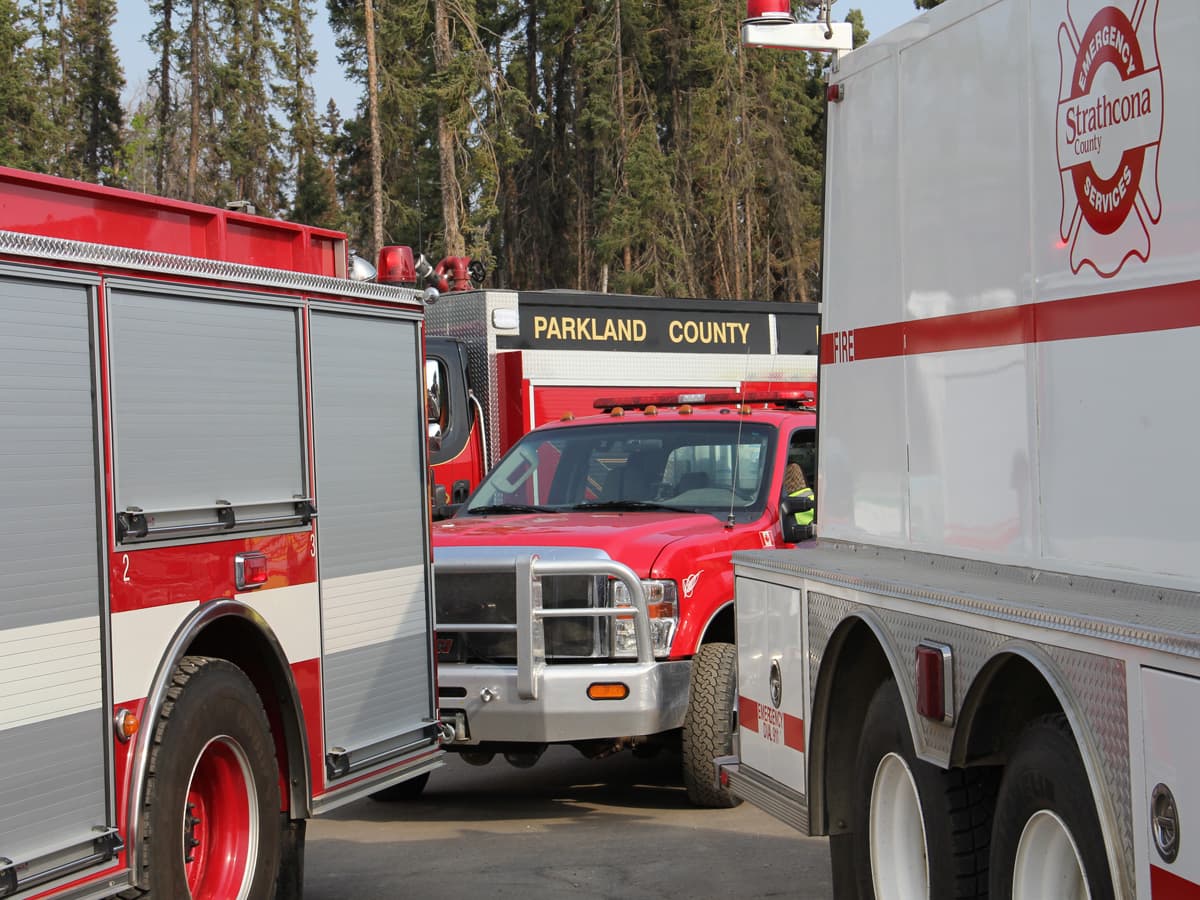
5:00 pm
Fire Services contingents head to the region from neighbouring municipalities and adjacent provinces.
Firefighters from across the province are on site to augment the 40-strong Lesser Slave Regional Fire Services crew. Hundreds more are en route to Alberta from Ontario, British Columbia and elsewhere.
Tuesday, May 17, 2011
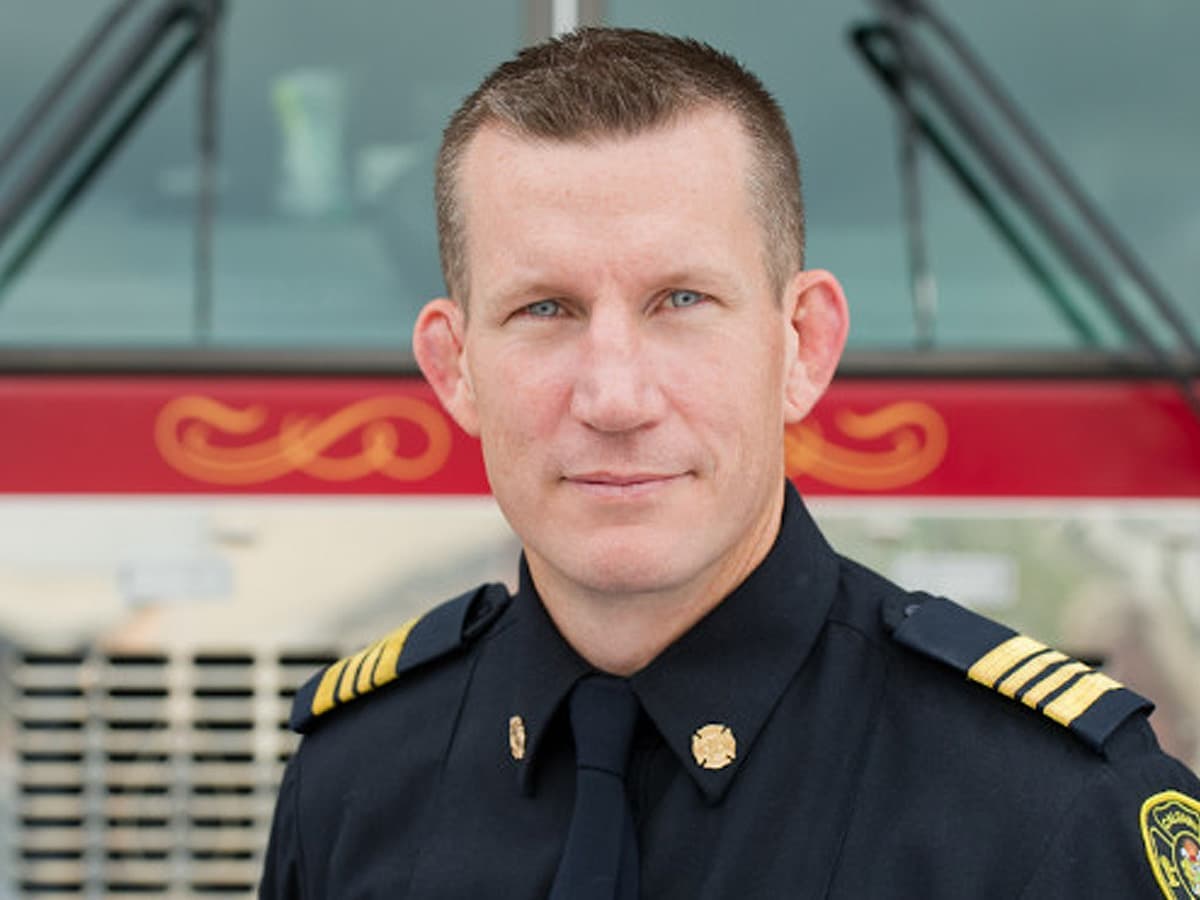
5:30 pm
Brian McAsey, Public Information Officer for the Calgary Fire Services, provides an update at a press conference following the wildfire.
SRD and local firefighters are joined by more than 120 emergency personnel from across the province. As they continue to attack the wildfires, only essential Emergency Operations staff, police and firefighters remain in the line of fire. It was unprecedented; it was unstoppable."
"If our 1,400 men and women of the Calgary Fire Department were lined up on that road...if you told us it was coming and we had every piece of apparatus ready to go, we could not have stopped that fire."
— Brian McAsey, Calgary Fire Services Public Information Officer
Friday, May 20, 2011
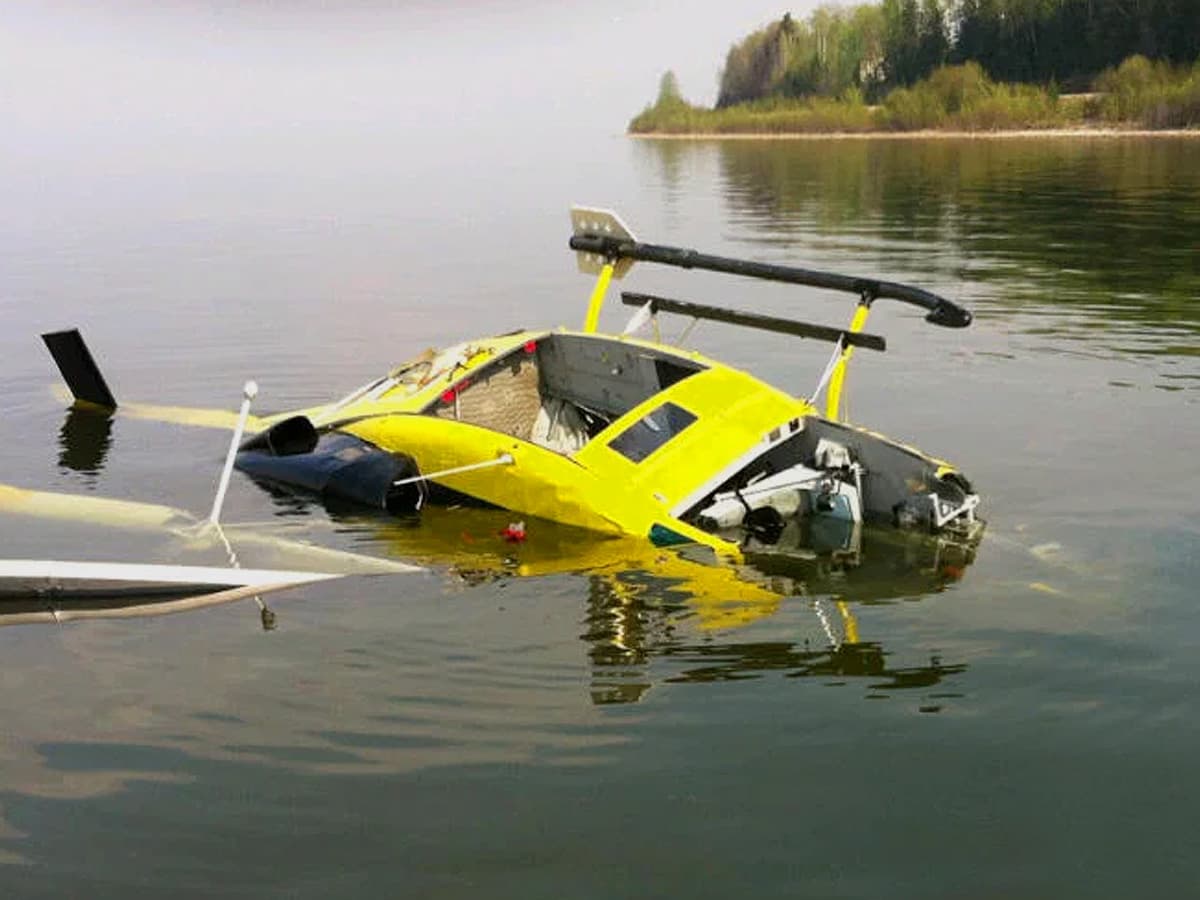
3:10 pm
A helicopter crashes just off the shore of Canyon Creek, killing the pilot.
Jean-Luc Deba of Montreal was on his twelfth bucket run when the Bell 212 helicopter he was piloting suddenly veered onto its side before crashing into Lesser Slave Lake near Canyon Creek. Mr. Deba is the only known casualty linked to the May 2011 wildfires.
"What a terrible way to be reminded of the courage our wildfire fighters display by being on the front lines for all of us."
— Mel Knight, Sustainable Resources Minister
Saturday, May 28, 2011
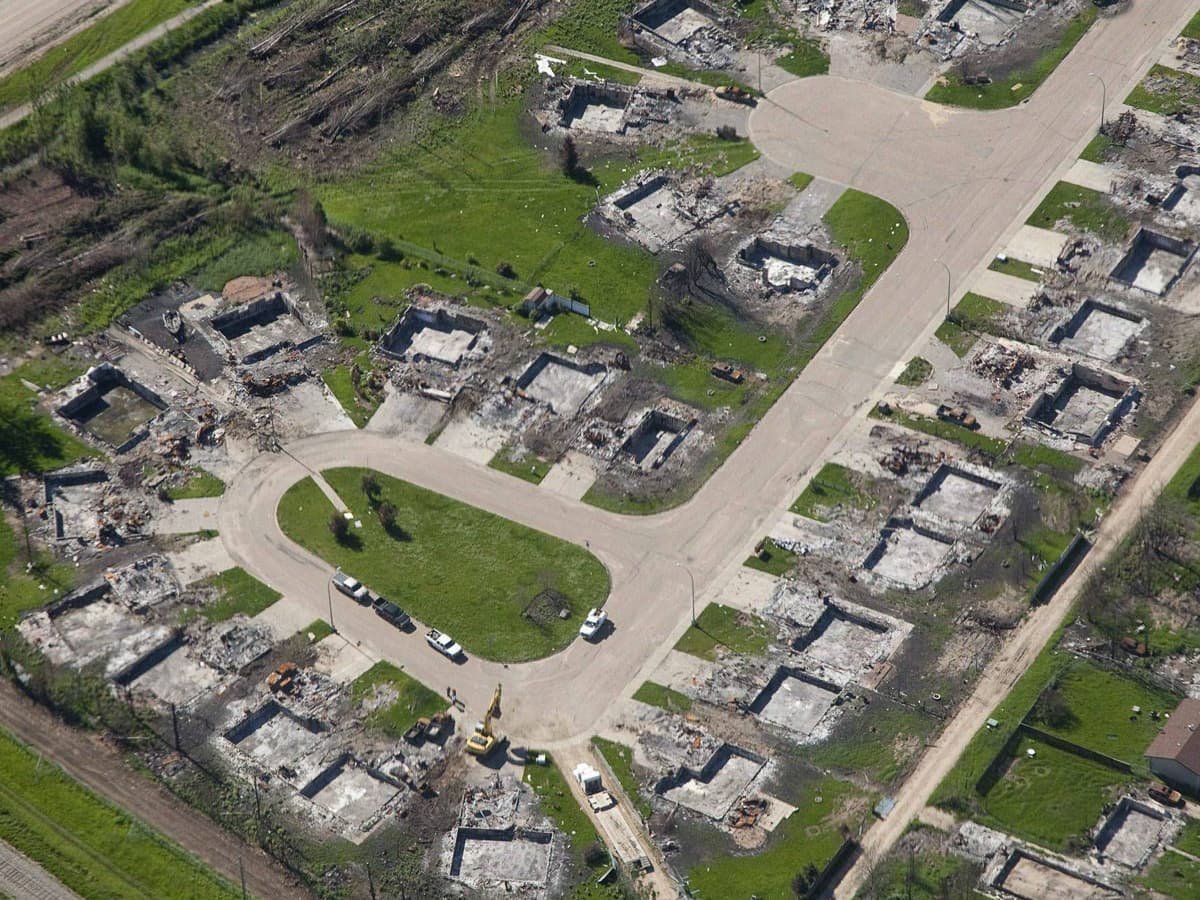
5:00 pm
The wildfires are contained.
All fires in the area are classified as “Under Control.” All remaining road blocks are removed, and recovery efforts begin in earnest. Essential services have been restored, and phased re-entry of residents begins.
The wildfires destroyed one-third of the town burning 433 buildings. It grew to more than 4,700 hectares.
Saturday, May 14, 2011

9:00 am
No clouds or rain for days. The region is bone dry. Northwest winds blow steadily at 50 to 70 km/h.
"It was incredibly windy that day. My husband and I were doing yard work when we saw the first water bomber fly over."

1:00 pm
A fire starts 15 km east of Slave Lake. In less than three hours it will spread from its ignition point to more than 500 hectares.
The first fire is spotted in an old logged-out area by quad riders — and moments later by an Air Attack Officer on a flyover. The blaze is immediately reported to MD administrators. Water bombers, ground crews and heavy equipment are dispatched to the location.

4:30 pm
A second fire is spotted from the air about eight kilometers east of Slave Lake.
Some resources from the first fire are diverted to fight this fire as it approaches the communities of Mitsue and Poplar Lane. It spreads from zero to 500 hectares in less than three hours.
"We saw a large black cloud and we thought 'this is something we've never seen before.' And then we saw fire dropping out of the sky."

7:15 pm
The MD issues a State of Local Emergency after learning that homes in Mitsue had been destroyed.
Residents in neighbourhoods east of the city, including Mitsue and Poplar Lane, are evacuated, but officials still believe the Town of Slave Lake is not threatened by the fire.
Sustainable Resource Development (SRD) and regional ground crews work throughout the night hitting spot fires, rescuing structures and back burning. SRD air attack eventually times out to resume in the morning.
Sunday, May 15, 2011

9:00 am
The Government of Alberta declares the fire near Slave Lake a Level II Emergency; an escalation from the Province’s standard Level I status.
With winds upwards of 70 km/h, both fires are now burning out of control. Fire 56 reaches its trigger point and the MD evacuates all communities west of Slave Lake. HWY 2 West closes for safe travel of evacuees, and HWY 2 East closes intermittently due to fire.

1:00 pm
The blaze is bumped to a Level III Emergency. Government departments are notified and an Emergency Operations Centre is established.
The Government of Alberta releases a statement saying that two wildfires are out of control in the Slave Lake area, and have burned about 2,000 hectares. The MD declares a State of Local Emergency (SOLE) and an evacuation order is issued for communities along the south shore including Canyon Creek. Residents begin evacuating.

2:30 pm
Winds change course and reach 100 km/h. Fire rages back through Mitsue, destroying more homes and heading for Slave Lake.
MD personnel make the call to abandin the Administration Office. They join Slave Lake incident command at the newly-establoshed EOC. SRD grounds its water bombers due to high winds. HWY 2 West and HWY 88 North are closed to all traffic.
"It was so smoky. It was hard to breathe. It looked like hell."

4:00 pm
A third fire is spotted to the north of Slave Lake, and available SRD resources are dispatched to the scene.
Compared to the other two rapidly spreading fires, this blaze proves relatively easy to contain.
Red Cross emergency volunteer teams begin congregating in Edmonton, preparing to head to Slave Lake with trucks full of cots, blankets and hygiene kits for those who have been evacuated.

7:00 pm
The fire crosses Highway 88 and is soon expected to cross Highway 2. All routes into or out of the area are completely cut off.
Water and electricity begin to fail. The local radio station goes off the air. SRD, Police, Fish & Wildlife and local fire crews stand their ground.
"These conditions make it incredibly difficult for firefighters to contain fires quickly. The wind compounds the problem we're already experiencing, which is warm, dry temperatures."
— Rob Harris, Alberta Wildfire Information Officer

9:00 pm
The situation is escalated to a Level IV Emergency – the highest possible designation.
The Emergency Operations Centre works around the clock. They request help from the Provincial Operations Center. Neighbouring municipalities contribute available resources.
This is the province's first Level IV Emergency since 2005 when there was massive flooding in southern Alberta.
Monday, May 16, 2011

8:00 am
Nearly all residents have been evacuated. Only essential staff and firefighters remain.
SRD and local firefighters are joined by more than 120 emergency personnel from across the province. As they continue to attack the wildfires, only essential Emergency Operations staff, police and firefighters remain in the line of fire.
"I have struck a task force of key governmental ministries and agencies to deal with the immediate needs of the community and develop a transition plan to continue to provide support services over the coming days, weeks and months."
— Ed Stelmach, Alberta Premier

5:00 pm
Fire Services contingents head to the region from neighbouring municipalities and adjacent provinces.
Firefighters from across the province are on site to augment the 40-strong Lesser Slave Regional Fire Services crew. Hundreds more are en route to Alberta from Ontario, British Columbia and elsewhere.
Tuesday, May 17, 2011

5:30 pm
Brian McAsey, Public Information Officer for the Calgary Fire Services, provides an update at a press conference following the wildfire.
SRD and local firefighters are joined by more than 120 emergency personnel from across the province. As they continue to attack the wildfires, only essential Emergency Operations staff, police and firefighters remain in the line of fire. It was unprecedented; it was unstoppable."
"If our 1,400 men and women of the Calgary Fire Department were lined up on that road...if you told us it was coming and we had every piece of apparatus ready to go, we could not have stopped that fire."
— Brian McAsey, Calgary Fire Services Public Information Officer
Friday, May 20, 2011

3:10 pm
A helicopter crashes just off the shore of Canyon Creek, killing the pilot.
Jean-Luc Deba of Montreal was on his twelfth bucket run when the Bell 212 helicopter he was piloting suddenly veered onto its side before crashing into Lesser Slave Lake near Canyon Creek. Mr. Deba is the only known casualty linked to the May 2011 wildfires.
"What a terrible way to be reminded of the courage our wildfire fighters display by being on the front lines for all of us."
— Mel Knight, Sustainable Resources Minister
Saturday, May 28, 2011

5:00 pm
The wildfires are contained.
All fires in the area are classified as “Under Control.” All remaining road blocks are removed, and recovery efforts begin in earnest. Essential services have been restored, and phased re-entry of residents begins.
The wildfires destroyed one-third of the town burning 433 buildings. It grew to more than 4,700 hectares.


